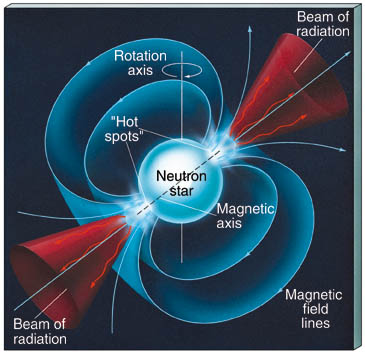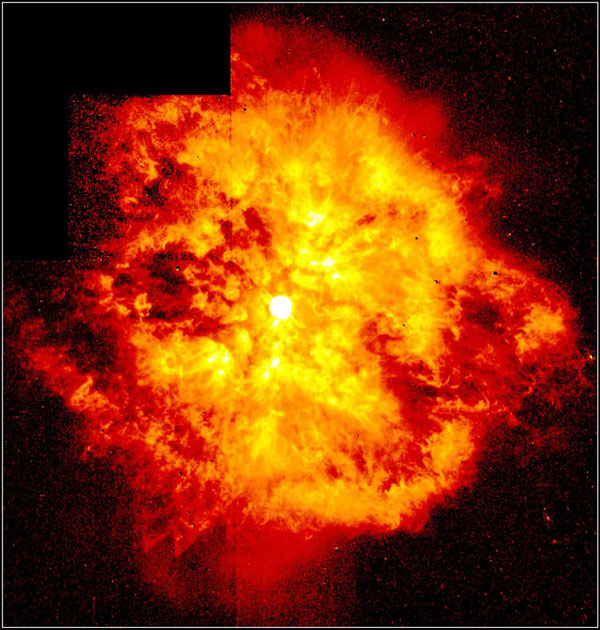At high temperatures corresponding to stars with mass above 1.5 times the solar masses that is the CNO cycle becomes dominant because its reaction rate increases more rapidly with temperature. In CNO cycle, C, O and N act as catalysts. The reaction cycle is given below
Step 1.
Step 2.
Step 3.
Step 4.
Step 5.
Step 6.
Step 1 is a Fusion reaction with energy release of 1.94 MeV and ray is emitted.
Step 2 reaction is a proton decay reaction with energy release of 2.22 MeV here nwutrino is emitted.
Step 3 reaction is a Fusion reaction and produces 7.55 MeV with reaction time of years.
Step 4 is fusion reaction with energy release of 27.29 MeV and gamma rays are emitted.
Step 5 is a proton decay reaction and 2.76 MeV energy is released.
Step 6 is a fission or decay reaction with energy release of 4.97 MeV and Helium is produced. The product of step 6 (12C) matches to that of reactant of step 1 and hence the cycle continues.
The fraction of energy released as radiation in the CNO cycle is slightly smaller than in the PP chain because more energy is carried away by neutrinos (25 MeV/He in CNO and 26.2 MeV/He in PP chain). CNO cycle transforms 4 protons into a helium, 2 positrons, 2 neutrinos and gamma radiation three times. Sun produces (these days) 98-99% of its energy by means of PP reaction and 1-2% from the CNO cycle.






